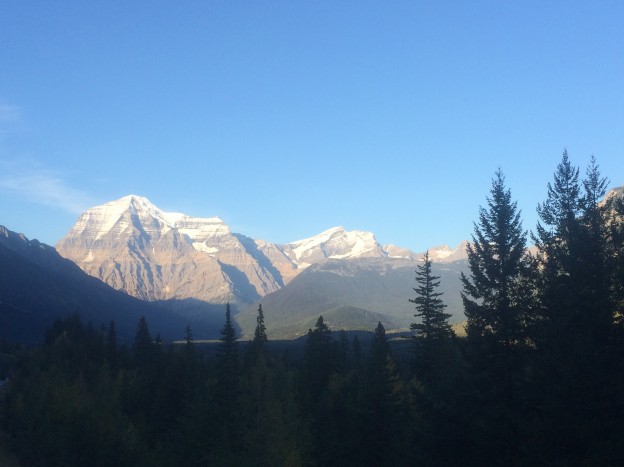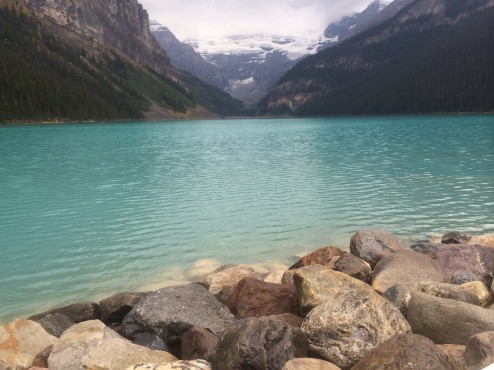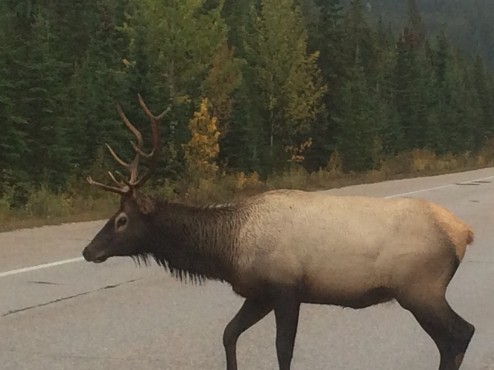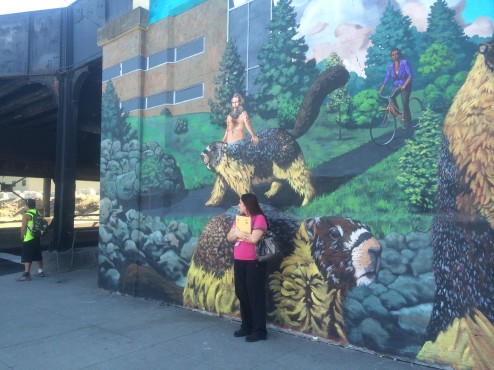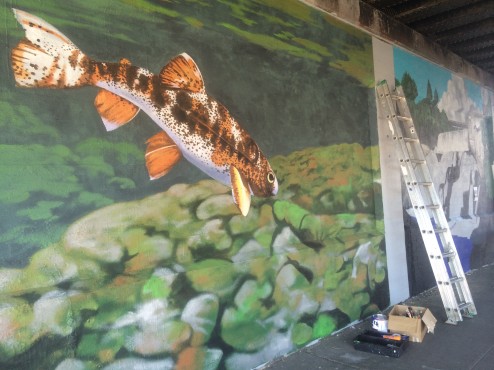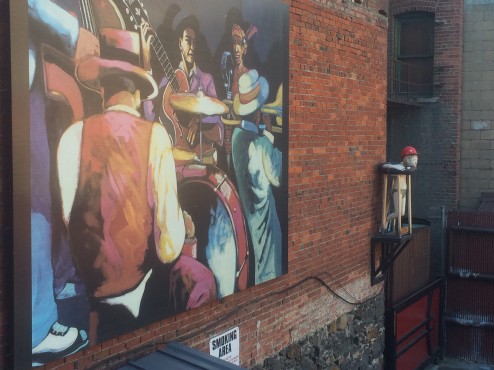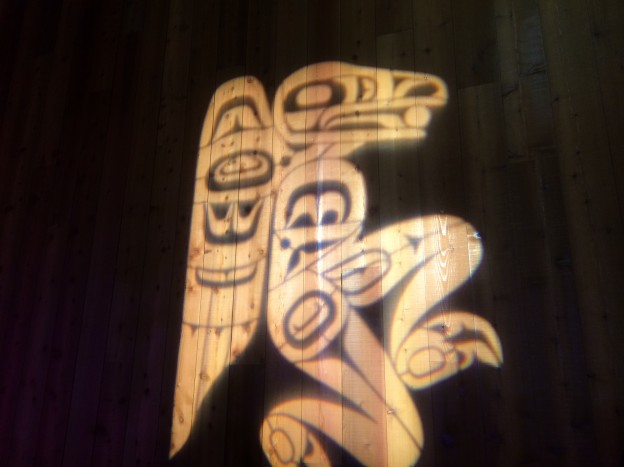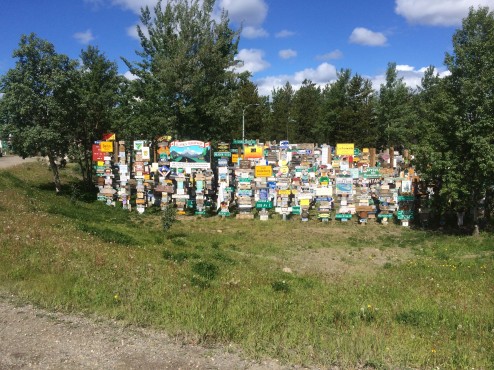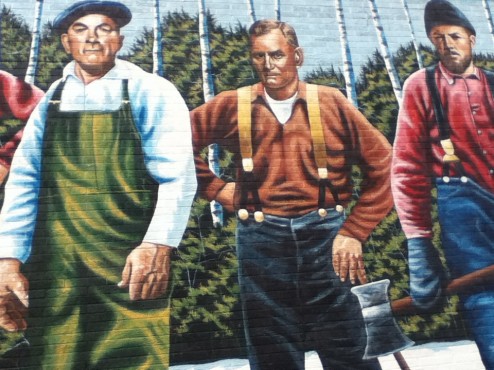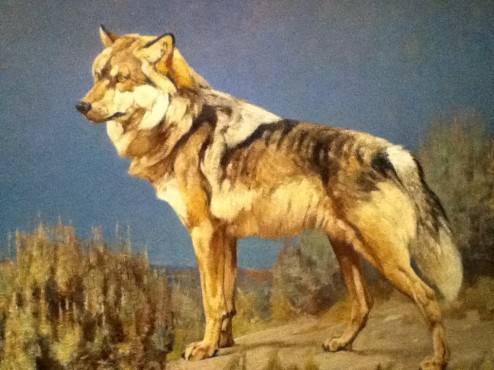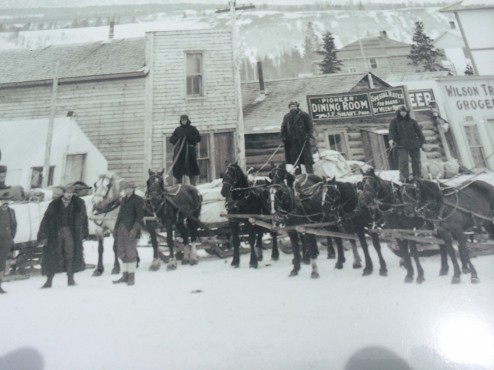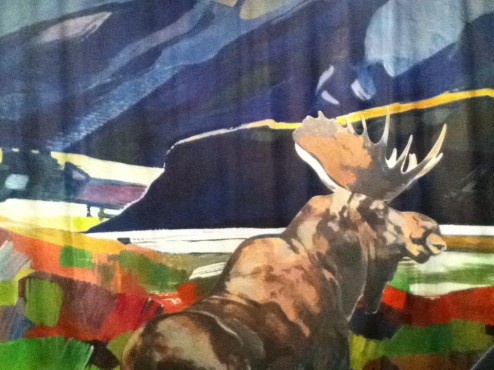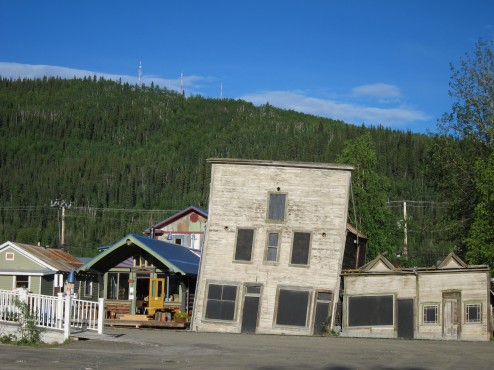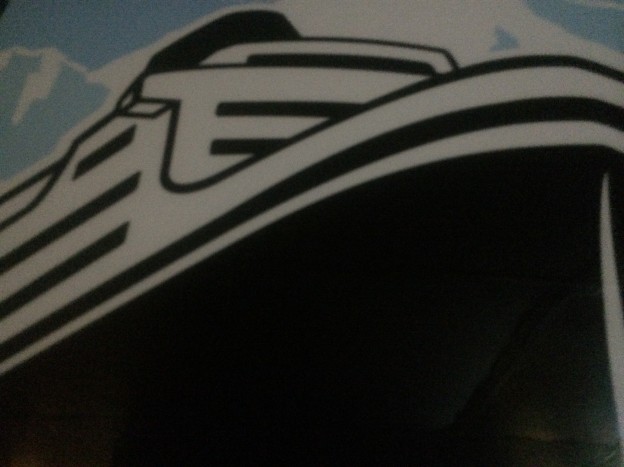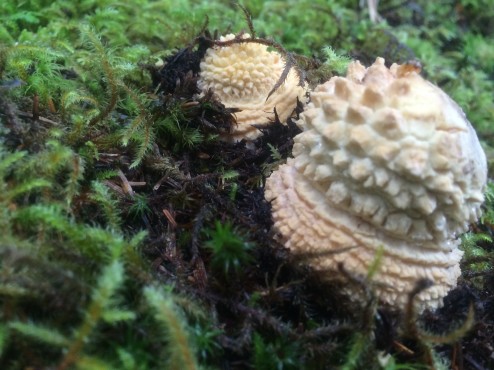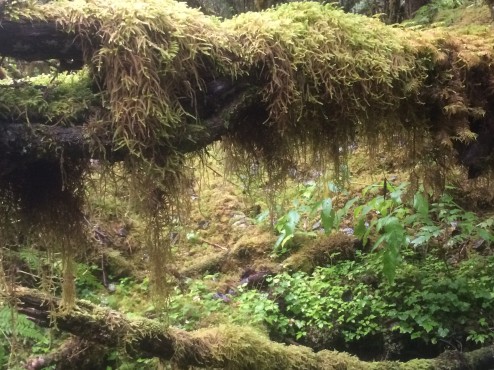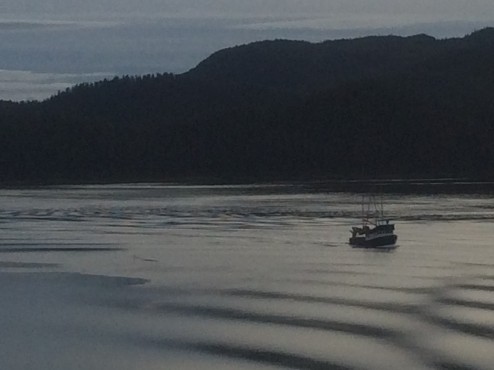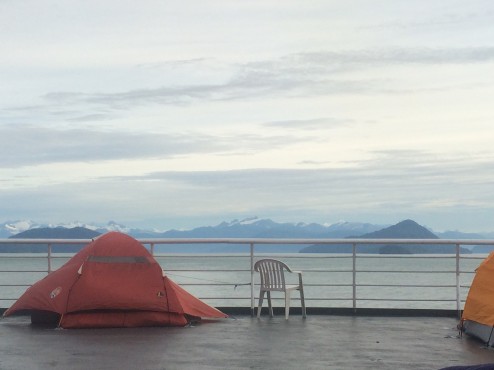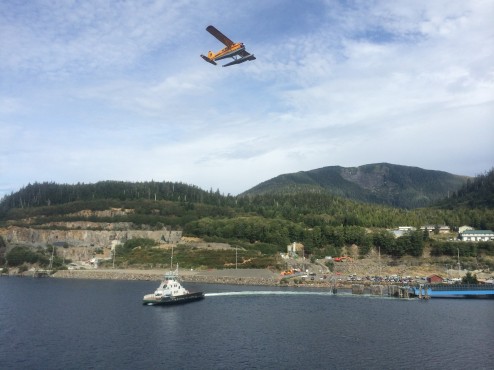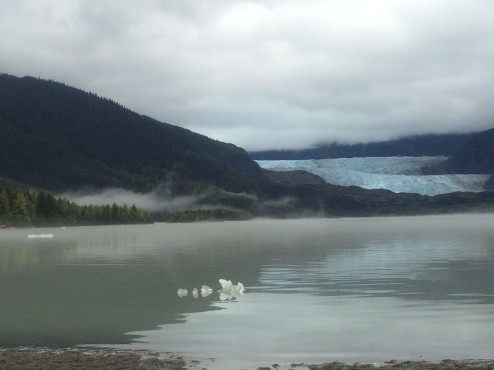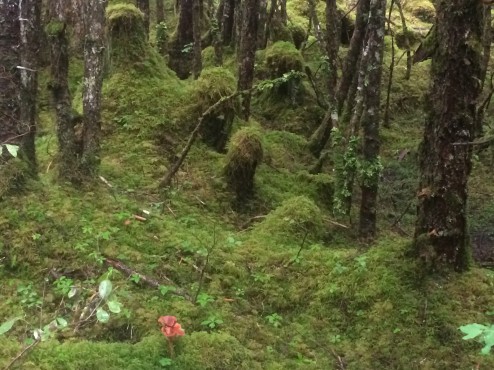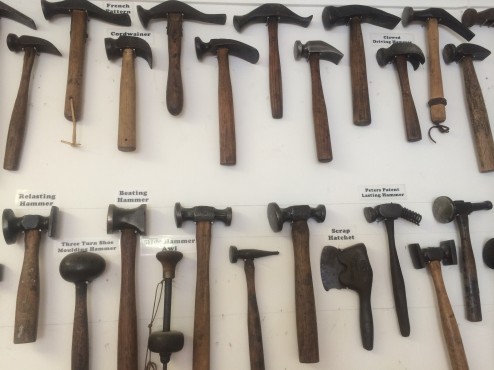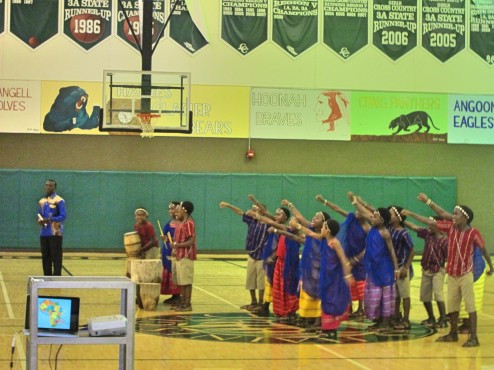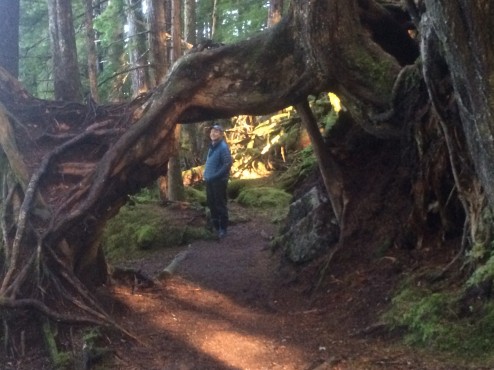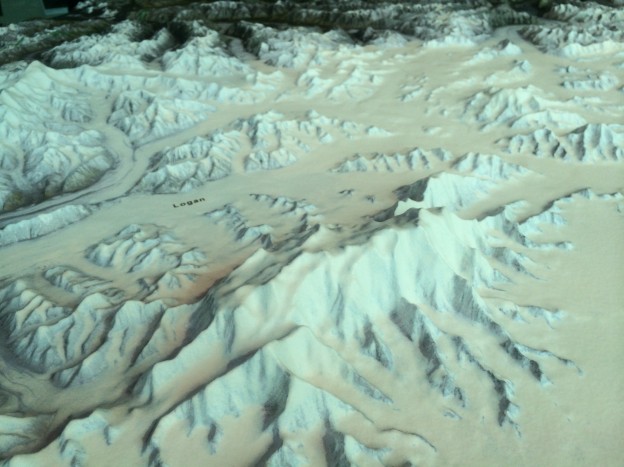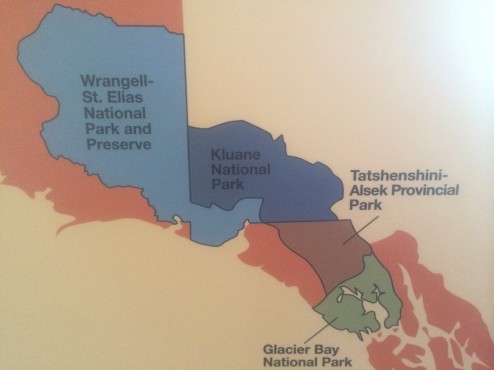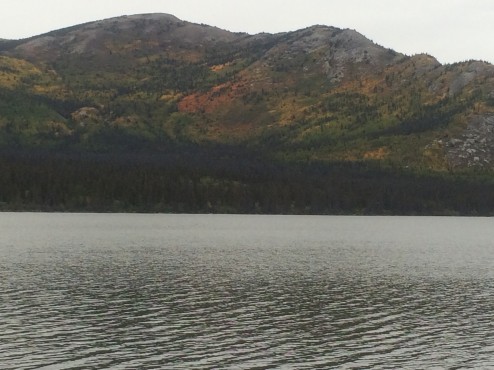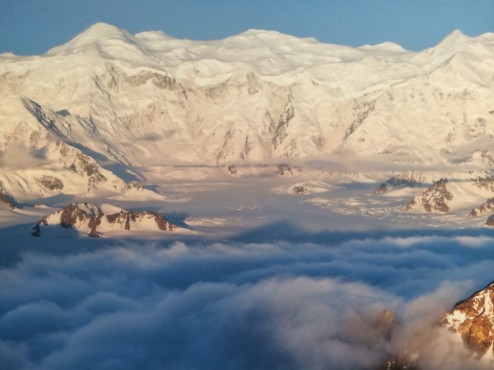Is there such a thing as too many glacier photos? After three plus months way north, my mom more or less told me it was time to “move on” to other topics. But, but, but….Mt. Robson, the tallest peak in the Canadian Rockies is just too splendid not to show in our feature image. Jasper and Banff Parks offer still more dramatic glaciers (Lake Louise, below).
A pair of Elk on the road right in front of our bumper in Glacier National Park, put us closer than any wildlife sightings on this trip. We greatly appreciate the highways designed with sod overpasses and miles of approaching highway fencing, keeping the large migrating herds of caribou from crossing the highways except at the sod bridges. Safer for all.
Glacier National Park, Montana, USA will need to rename itself because it is so pathetically lacking in glaciers. We could have a national contest to rename it, “Pretty Nice Park”, or “Happy Animals Park”, so people will enjoy the fall colors, gorgeous waterfalls, and beautiful geologic formations…just not glaciers. With over 150 named glaciers 75 years ago, it is down to only 20 now, and park personnel predict none within a decade. Mostly you see little patches of dirty glacier surrounded by large fields of fine brown silt outlining where massive glacier-filled cirques used to be. We won’t admonish you to go now, instead will encourage you to drive due north to the Canadian Parks to see real glaciers.
We continued driving south lingering in lovely Sandpoint and Coeur d’Alene, Idaho both with foodie attitude and good wines, and nice settings on the water…and finally headed west for the first time in two months, only to discover our new ‘small city’ favorite…Spokane, in Eastern Washington. As the Spokane River flows through town, with lovely falls, great bridges and bike trails, we rode bikes to explore lots of outdoor art. With three universities and several large regional theatres (including the Bing Crosby), the town is jam packed with great food, and added cultural attractions for October’s “Art Month.” It feels like a big city (2nd largest in Washington with a population of 200,000) and a small town at the same time.
We loved meeting these extras, just exiting the make-up trailer on a shoot near our hotel. What’s your guess, another Zombie movie…or just another day in Spokane?
Spokane is a train town and they roll through, throughout the day and night. Many of the underpasses have become graffiti’d pee stops and homes for vagrants. In 1993, local artist Tom Quinn (www.quinntheartist.com) contributed a 20 ft. tall wall mural of oversized Hoary Marmots…and the Marmot became the town’s informal mascot. With time the mural faded and became obscured by bird poop and vandalism. Above is Tom’s replacement Marmot mural, painted at the City’s request this time, instead of as free form public expression.
I happened on Tom painting new murals in the underpass and he was able to tell me the provenance of the murals (below) seen from our bed at the very groovy Ruby Hotel: muralist Ric Gendron. I am sorry I am not able to credit the creator of the wee bather in the adjoining wall sculpture or the muralist in the under pass at the bottom of the blog.
It took me a moment to figure out why the area’s designated Smoking Area seen above, specifically stated, “No Marijuana Smoking”. Duh. Recreational use of Marijuana is legal in Washington…but not in public spaces. The City of Seattle Police Chief last week dismissed 80% of the citations issued for public marijuana smoking, because it was the personal crusade of one officer who wrote all of those tickets. We’ve never been to Colorado or anywhere recreational marijuana is legally available to the general (over the age of 21) public. Of course, in our investigative journalistic quest, we visited a dispensary, only to find it…sold out! Darn! We were fantasizing about the brownies!
Anyway, it is time to continue driving west, then south into other western states with old-fashioned rules about marijuana, and standard, ‘virgin’ fudge brownies…not that there’s anything wrong with them, as Seinfeld would say. We say, “All you need is love…la…la…la,la,la…”

